France is incredibly diverse when it comes to winter destinations. You can hit some of the world’s most scenic slopes of the majestic Alps, lounge under the Meditteranean sun on the French Riviera beaches, and enjoy the wide expanse of the moody Atlantic Ocean. You can also sip champagne in the region that gave the drink its name, discover the magical atmosphere of Alsace, or give in to the cultural grandeur of Paris. It’s a country that knows how to impress and does it with a special flair. And don’t forget all the gastronomic pleasantries that will accompany your winter visit; French cuisine is ready to treat your tastebuds.
Those looking for snow will find plenty of it in the mountains, but there’s always a chance to trick the weather and escape to Corsica for near-spring weather and beach-hopping possibilities. We’ve compiled this list based on travelers’ opinions on Tripadvisor and Google, vast personal experience traveling across the country in winter, and the best suggestions of the official tourist boards. Since France is ready to surprise and captivate in winter, it’s time to embrace its colorful proposition.
Grenoble
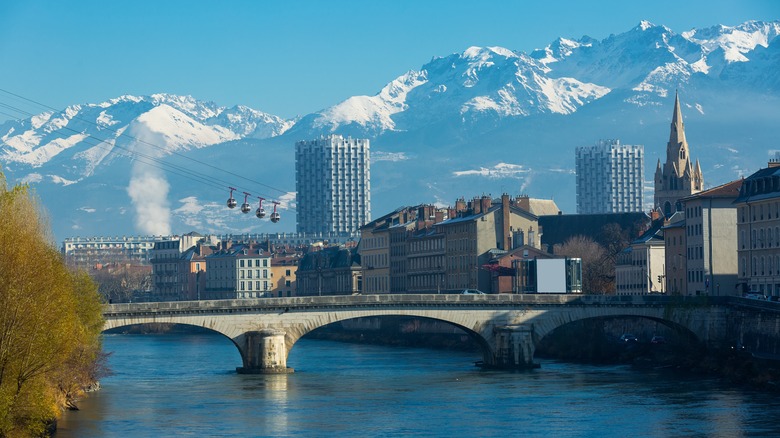
Grenoble is equally perfect for the French Alps newcomers and hardcore fans. Surrounded by the high mountains from all sides, it boasts a picturesque museum-filled Old Town, a romantic Isère river promenade, and plenty of winter fun attractions in the immediate vicinity. The first thing to do here is take a cable car ride to the 19th-century Fort de La Bastille, a breathtaking vantage point for the Alps and the town beneath. Bastille is also an entertaining way to discover the history of Grenoble, with a series of defensive structures and dungeons to explore.
The city has not one but three mountain ranges around, so you have access to a whole playground of snow-filled activities. Chamrousse Ski Resort of Olympic fame is great for sledding, Col de Porte is a perfect place to start your skiing or snowboarding journey, and Chartreuse plateaux trails are ideal for snowshoeing adventures. As for the urban side of Grenoble, be sure to check out the Museum of Grenoble, which is packed with world-class art from Monet to Warhol.
Aix-les-Bains
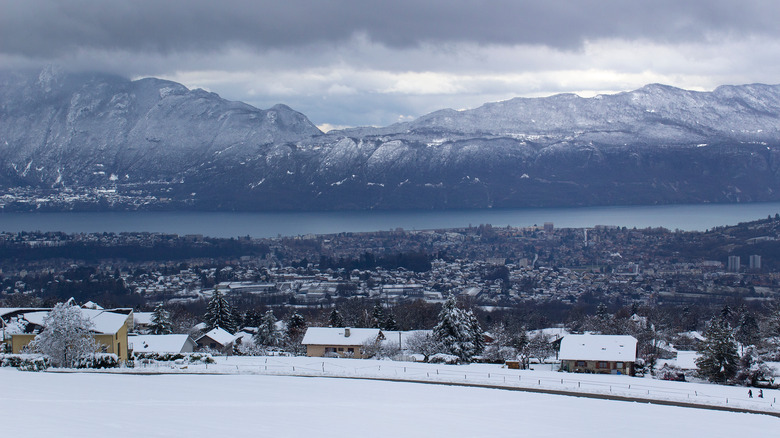
Where the aquamarine blue waters of Lac du Bourget meet the towering heights of the Savoy Alps, you find Aix-les-Bains. It’s among France’s go-to destinations for thermal baths. The history of hot spring enjoyment dates back to the Roman times here and continues until now. Winter is a wonderful season to indulge in the local spa and hydrotherapy. Get a classic indoor-outdoor hot springs experience at Valvital – Thermes Chevalley or opt for more luxurious body treatments at Spa Parenthesis and Black Diamond Luxury Spa.
The historic downtown of Aix-les-Bains reflects its background as a prestigious spa town for the European wealthy and famous. You find a kaleidoscope of Belle Epoque buildings, a Monte Carlo-reminiscent Casino, and a superb Faure Museum. Housed in a 1909-built mansion, it boasts one of the largest impressionist collections in the world, as well as a whopping number of 34 Rodin sculptures. For skiing and snowboarding, there’s a family-friendly Revard Ski Resort just 13 miles off the center of Aix-les-Bains. Also, you can easily reach Chamonix Alps for more activities and superb mountain hiking trails.
Nice
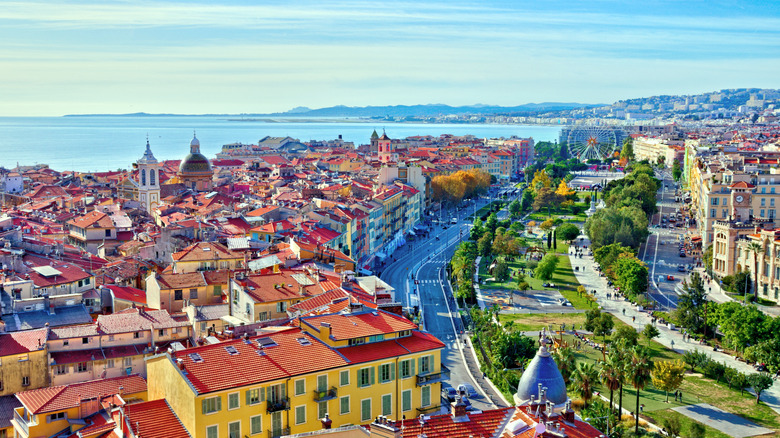
Marco Fine/Shutterstock
France is lucky to have Nice. This seaside gem of a town is among the most beautiful destinations in Europe, no matter the season. Winter sees the French Riviera’s capital at its most contemplative and atmospheric. But don’t worry, the Meditteranean sun still shines bright, the Old Town streets are at their most charming, and the culture-infused things to do are plenty. Accommodation prices drop in notoriously expensive Riviera in colder months, so you’re guaranteed to score some good deals, too.
The 4-mile-long Promenade des Anglais is where the sublime sea vistas are and where you find the most stunning palaces, Art Nouveau hotels, and lush gardens. Be sure to hike or take a tourist train to the top of the Colline du Château for an iconic panorama of the city and the beaches. Winter is a perfect time to embrace the rich museum heritage of Nice. Tour local superstars like Villa Masséna, which houses Napoleon’s death mask, Musée des Beaux-Arts, filled with impressionist masterpieces, and the Modern and Contemporary Art Museum, famous for its avant-garde collection. Fancy a budget-friendly day trip to Monaco? A €2.50 public bus, number 100, takes you to the millionaire-loved micro country in under an hour.
Morzine-Avoriaz
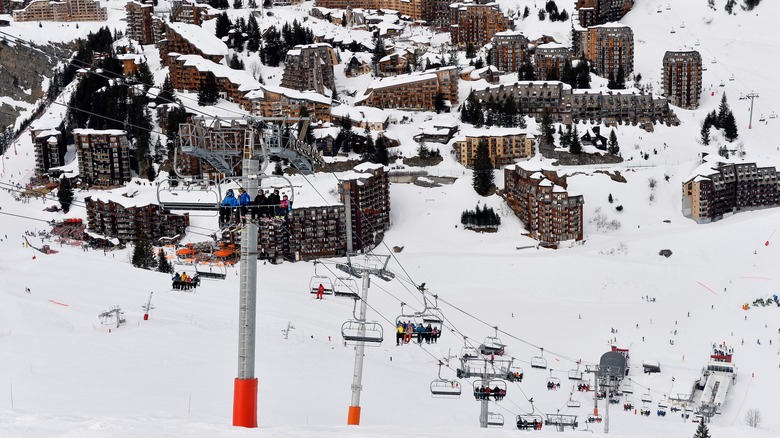
18th Studio/Shutterstock
While Morzine and Avoriaz are two separate destinations in the Haute-Savoie, they often go together as a part of the sprawling Portes du Soleil ski area. The latter is the second-largest ski area in the world, boasting nearly 400 miles of pistes, encompassing 2 countries (France and Switzerland), and accessed from 12 resorts. Morzine is a traditional market town with quintessential alpine chalets, an idyllic valley river, and plenty of authentic mountain restaurants. Tranquility and access to the beginner-friendly slopes make it a great choice for families and skiing newcomers.
Linked to Morzine by shuttle and a 4-minute cable car, Avoriaz is a 60s-built designated skiing village that profits from 5,906 feet of elevation and has a car-free status. It will work as a base for experienced skiers, snowboarders, and those who’d like to fully feel the French winter sports culture. The resort is ski-in ski-out, has plenty of apres-ski bars, and comes with an Aquariaz tropic-themed water park for kids.
Saint-Martin-de-Belleville
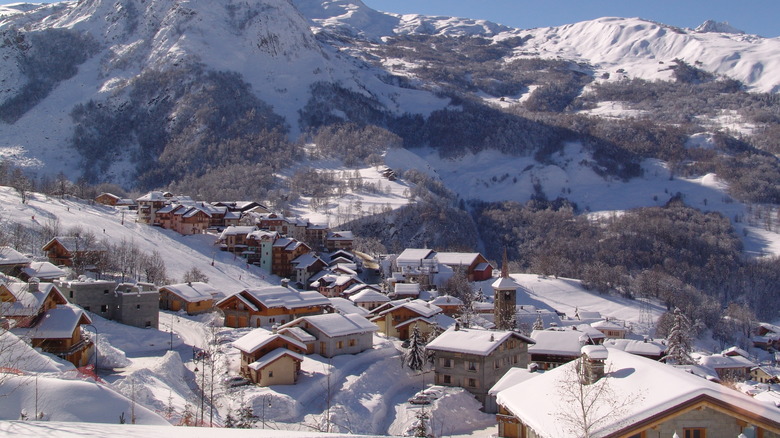
Chad Gordon Higgins/Shutterstock
It’s hard to resist the charms of Saint-Martin-de-Belleville. On the one hand, it’s a postcard-perfect French alpine village with an ancient stone church, a series of wooden chalets, and breathtaking Savoyard mountains. But there’s a catch here. The village is also one of the best smaller ski resorts in the country, thanks to its access to Les 3 Vallées ski area, which is officially the biggest in the world.
Les 3 Vallées’ stats are nothing short of impressive. With more than 372 miles of runs, 158 lifts, 70 walking routes, 40 mountain bike trails, and 74 cross-skiing pistes, it’s a gift that keeps on giving. All of it set to the unparalleled beauty of the French Alps. Price-wise, a one-day ski pass in Saint-Martin-de-Belleville starts from €48, but there are family discounts and reduced rates for Saturday skiing if you book in advance online. For a gourmet dining experience, head to 3-Michelin-starred La Bouitte outside the village, serving Alps-inspired French cuisine.
Grand Tourmalet
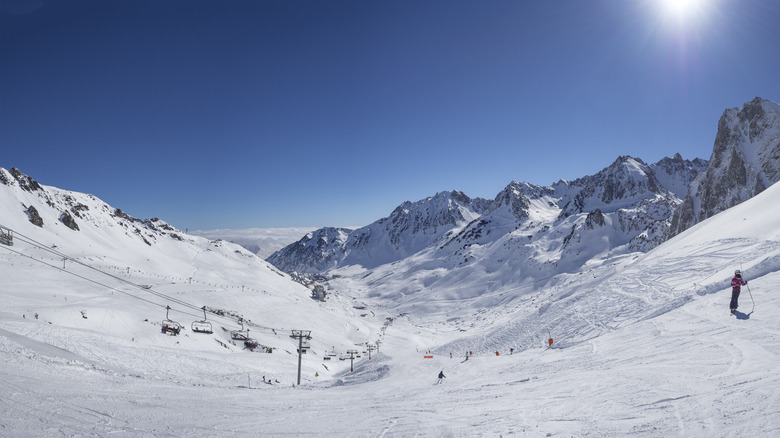
Aljndr/Shutterstock
When it comes to enjoying the fresh mountain air on slopes, it’s not only the Alps in France. Not widely known and much more affordable, the ski resorts of the Pyrenees provide a nice and less-crowded alternative. You won’t find the glamor of Courchevel or the fashionable apres-ski scene here. But that’s exactly why you should give it a try: it’s a more laid-back way to enjoy the mountains. Grand Tourmalet is among the biggest ski resorts in the French Pyrenees, and it’s also the best one for newcomers. During winter, it boasts 68 slopes, 62 miles of area, and 29 lifts.
The highlight of Grand Tourmalet is Pic du Midi de Bigorre peak. Standing at 9,439 feet and hosting an Observatory, it’s a must-visit for a panorama of the Pyrenees that immediately takes your breath away. The peak is accessed by a cable car from La Mongie ski resort.
Colmar
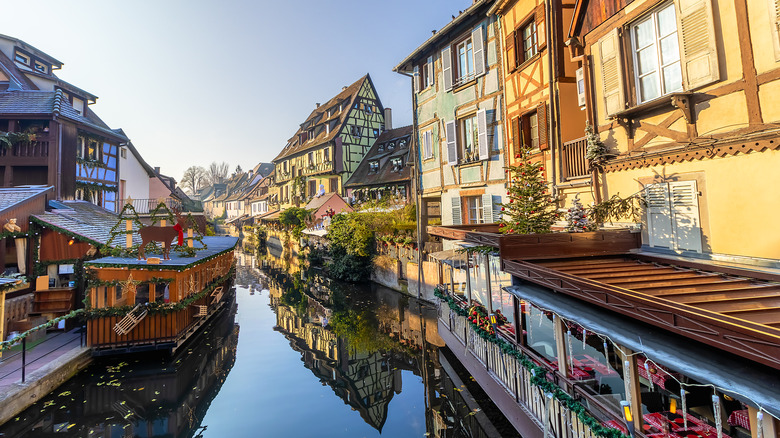
agsaz/Shutterstock
How can you not fall in love with Colmar? The boats slowly glide through the narrow canals, half-timbered houses grace the cobblestone streets, and Gothic churches impress with their intricate façades. If you were to shoot a fantasy movie, no decorations would be needed; being here feels like medieval times never ended. No wonder it’s perfect for a magical couples getaway.
Snowy winter months just make the allure of Colmar’s Old Town more enticing. The town is known to be the Alsatian wine capital, with 38,300 acres of vineyards, a legally protected bottle (flute of Alsace), and an impressive variety of local wines. Numerous bars à vin are scattered around the historic core, and you should check them out to savor the locally-produced Sylvaner, Muscat d’Alsace, and Pinot Blanc. Winter is also a perfect time to indulge in Alsatian gastronomy by trying local star dishes such as coq au Riesling (chicken braised in Riesling wine), tarte flambée (traditional bacon onion flatbread), and fromage blanc tart (a local variety of a cheesecake).
Paris
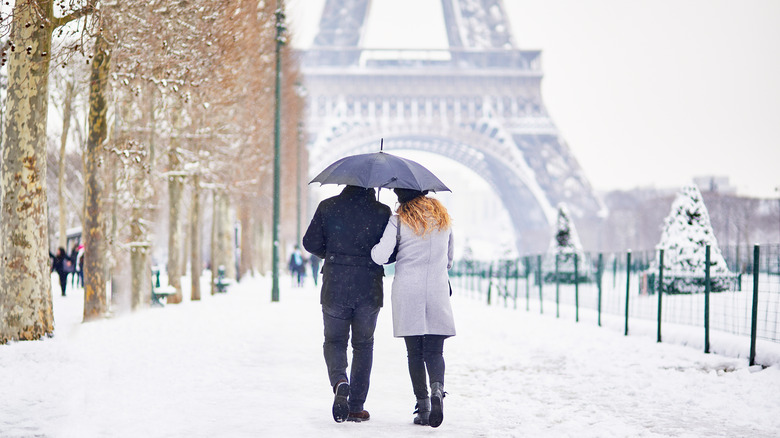
Ekaterina Pokrovsky/Shutterstock
There’s no bad time to visit the French capital. Still, winter is one of the best seasons to come to Paris. The City of Lights knows how to keep you busy with atmospheric cafes, magnificent architecture, top-notch shopping, and fantastic museums. While the Louvre, Musee d’Orsay, and Centre Pompidou are still very much worthy of your attention, give some lesser-known spots a try.
Palais Galliera is an elegant address fully devoted to the history of fashion. The Museum of Decorative Arts boasts one of the best design collections in the world, and the Guimet Museum has a definitive gathering of Asian art. Check out the Musée Carnavalet, too; it’s a free palace-set museum in the Marais district that highlights the city’s history. Musée d’Art Moderne and Musée de la Vie Romantique are other admission-free attractions to visit for immersing into the Parisian atmosphere.
Colder months are also ideal for indulging in Parisian shopping. Thankfully, there is something for every budget here. Galeries Lafayette and Samaritaine Paris Pont-Neuf are for a luxury department store experience. Check out Golden Triangle’s high-fashion boutiques and Palais Royal arcades for even more upscale shopping. Marais and Montmartre districts are perfect for gallery hopping and vintage clothes hunting. Finally, for antiquities and unusual finds, head to the Paris Saint-Ouen flea market, which is among the largest in the world.
Étretat
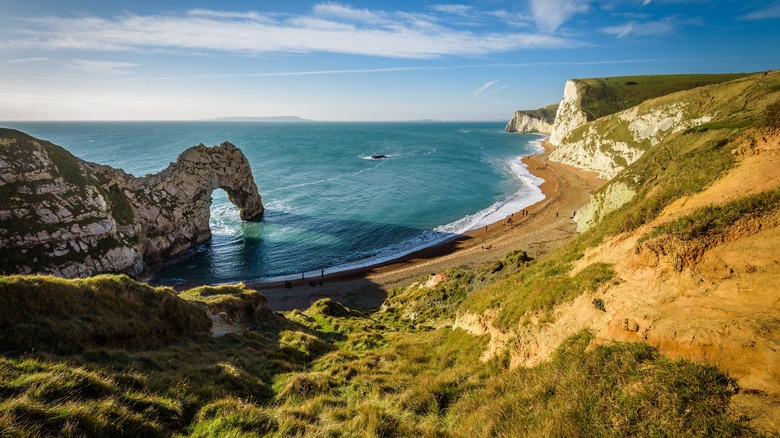
Roberto La Rosa/Shutterstock
Seeing the vista of white chalk arches rising from the waters of the English Channel for the first time is a special moment. The scene has a subtle sublimity: the moment of unfiltered beauty. Welcome to Étretat, one of the most inspirational places to visit in France. A seaside town on the Alabaster Coast, it has long been a beacon for painters, writers, and cinematographers.
The famed impressionist master Monet was so fascinated by the view that he created not one but 90 oeuvres depicting the place, trying to capture its splendor in different lights and seasons. Other French artistic giants like Courbet, Boudin, and Matisse were captivated, too, and produced many Étretat paintings of their own. You could have seen the town in Luc Besson’s “Lucy” and Netflix Omar Sy-led show “Lupin.” This destination is as cinematic as they get.
Naturally, such a spectacular spot is very popular with visitors. Winter is the best time to come to beat the crowds and have the stunning panorama (almost) to yourself. It will be colder, the English Channel waves will be higher, and windy weather will abound. But it is also among the most enchanting seasons to visit when mists and a game of light create an aetherial show combined with the majestic profile of the arches. Be sure to check the Jardins d’Etretat for a nice vantage point and try the delights of Normandy’s cuisine in cozy traditional restaurants.
Reims
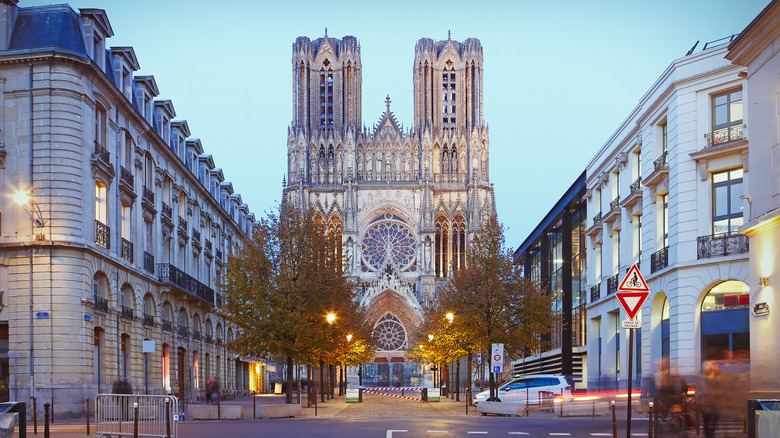
Narvikk/Getty Images
Reims Cathedral is a sight that immediately takes your breath away. The gigantic structure mesmerizes with its Gothic ornaments, omnipresent gargoyles, and still splendor. Apart from the cathedral, this Grand Est city has a pedestrian-friendly historic core that fuses medieval architecture with elegant Art Deco buildings (a consequence of the WW2 bombing and subsequent rebuilding). Be sure to visit the Musée Saint-Remi housed in a former 6th-century abbey, take a tour of the interiors and gardens of Musée-Hôtel Le Vergeur, and try the local favorite biscuit rose (a pink cookie with carmine).
Reims is also a gateway to Champagne, the French region where the world-known sparkling wine is produced. If you were to visit one champagne-related sight, make it Veuve Clicquot Ponsardin. You will descend to underground caves (that are former limestone quarries) for a tour of the past and present of the celebrated French champagne brand that concludes with Brut Carte Jaune tasting. Another notorious cellar is Maison Mumm, which has a subterranean network and a Cordon Rouge tasting.
Biarritz
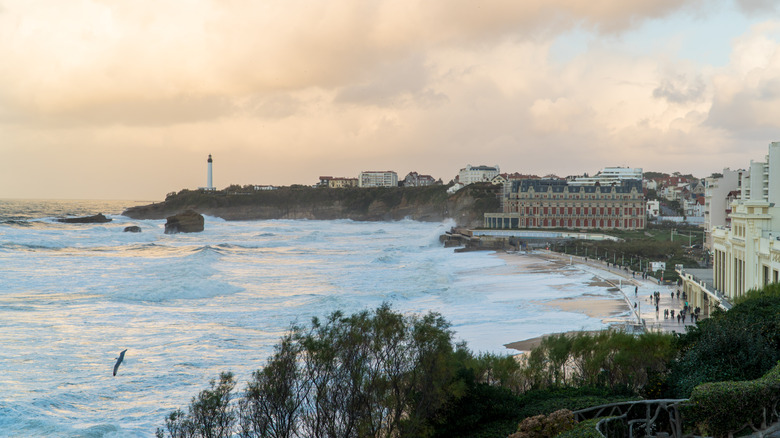
Manel Vinuesa/Getty Images
Capricious waves of the Bay of Biscay hug Biarritz, which is among the most stunning Atlantic destinations in the country. Central California comes to mind when you’re here. Think surfing culture, larger-than-life white-sand beaches, scenic walking trails, and abundant luxury coastal hotels. All of it with a tasteful French flair, Belle Epoque architecture of numerous villas, and a strong Basque identity. In Biarritz, the oceanic nature is at its raw; the winds tend to be stronger than in gentle Cote d’Azur resort towns like Cannes or Antibes, and the grandeur of the Atlantic is felt more vividly. If you’re a surfer, the town is among Europe’s top spots to hit the swells; just be sure to wear the all-body suit in winter as the water will be around 55 degrees Fahrenheit.
Colder months bring melancholy to local landscapes, keep the crowds away, and lower the prices at the local accommodations (ocean-view room is the one to book). It’s a great time for long contemplative walks along the coast, warming up in atmospheric cafeterias and exploring the mouthwatering local cuisine. Basque, French, and Spanish influences amalgamate on the plate here, with seafood like mussels, tuna, oysters, and cod taking the central stage.
Menton
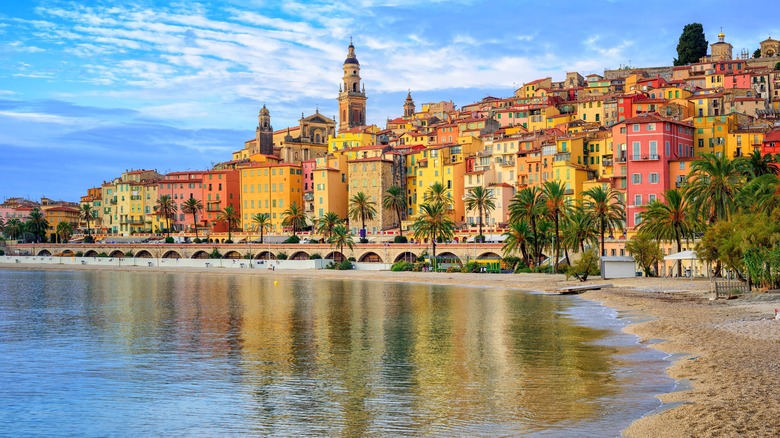
Aymankh2023/Shutterstock
It’s almost impossible to find a non-photogenic spot in Menton. This underrated French Riviera town mesmerizes with cascading Old Town filled with colored houses of various hues of terracotta. The peaks of Prealps that majestically tower over make things even more visually stunning. Then, there are azure Mediterranean beaches and a charming promenade that guarantee irresistibility. Winter allows you to encounter this town at its most authentic. Locals often sit outside café terraces, enjoying pleasantly mild weather — the atmosphere emphasizing tranquility.
Slow travel abounds in the colder months. Take a relaxed stroll through the postcard-perfect streets of the Old Town, take a peek inside the imposing Baroque Basilique Saint-Michel Archange de Menton, lose yourself in the greenery of Val Rahmeh-Menton Botanical Garden, and plan a dreamy picnic on Sablettes beach. On the food front, indulge in fine dining at the famed Mirazur with 3 Michelin stars, try the seafood at Le Petit Port, and have a cup of ice cream from one of the vendors on Rue Saint-Michel.
Montpellier
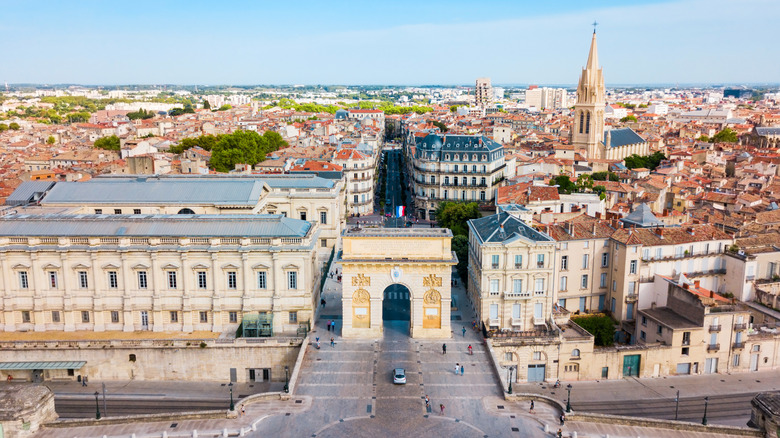
Saiko3p/Getty Images
A vibrant icon of the French South, Montpellier is an exciting year-round destination filled with life. Closer in spirit and looks to Spanish Barcelona and Valencia than Paris or Lyon, it enchants you with energetic café culture, labyrinthine Old Town, unparalleled nightlife driven by the vast student population, and the proximity to amazing Mediterranean beaches. Winter is sunny, and the temperature rarely goes below 53 degrees Fahrenheit, so you can leisurely inhabit the many outdoor terraces around the city center and soak in the simple pleasures of southern life.
The tour would usually start next to Montpellier Cathedral, a Gothic masterpiece representing everything grandiose French church-building is famous for. Nearby is a free Jardin des plantes de Montpellier, the country’s oldest botanical garden, and a perfect spot for slow walks. Like Paris, the city boasts its own Arc de Triomphe and a splendid square that goes with it, a stately Promenade du Peyrou with an 18th-century Aqueduct. Be prepared to lose yourself inside the maze of narrow alleys and shaded squares of the Old Town, filled with bars, restaurants, and coffee shops. Finally, no visit to Montpellier is complete without hitting the Meditteranean coast, the beach town of Palavas-les-Flots, which is well-connected to the center by bus and tram.
Ajaccio
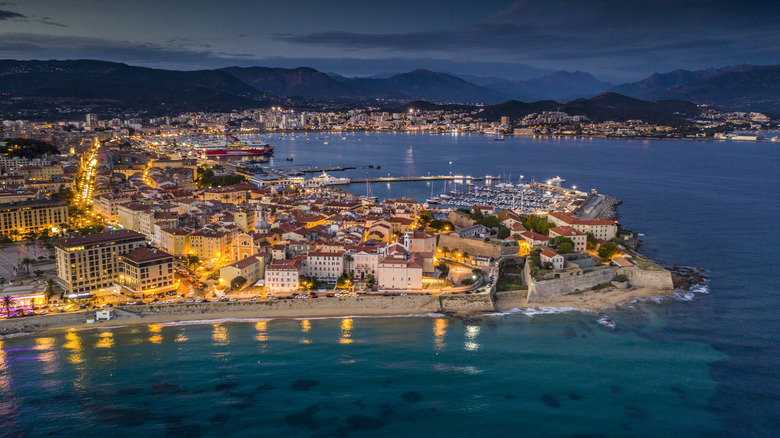
Schroptschop/Getty Images
Escape mainland France to the natural kingdom of pristine coved beaches, mountainous trails, traditional villages, and authentic culture. Corsica is where the blessed island holiday is. Its capital, Ajaccio, is the convenient entry point and an ideal base for exploring this fascinating part of the country. Known in the public perception as the birthplace of the one and only Napoleon Bonaparte, the town is a laid-back, slow-paced Meditteranean gem with a long and gorgeous sea promenade. The tiny yet charming Old Town offers plenty of accommodation choices for all budgets. Being here, you can’t miss the Maison Bonaparte, a house where the Emperor was born, turned into a museum about his life. To dive even deeper into Napoleon’s canon, check out the immersive culinary cave experience La Grotte Napoléon, a Tripadvisor hit among Ajaccio visitors.
Don’t limit yourself only to the capital, though. Corsica has so many wonderful places to explore, and winter is a great time to avoid the heat and discover the quieter beauty of the island. See the wild splendor of Scandola Natural Reserve and the bluest of waters of Girolata on a boat trip. Be awe-inspired by the fjord-like gorges of Prunelli Valley and tour its picturesque villages where time has stopped. For even more breathtaking vistas, embark on a scenic train trip from Ajaccio to Bastia that goes directly through the mountains.
Our methodology for choosing these destinations
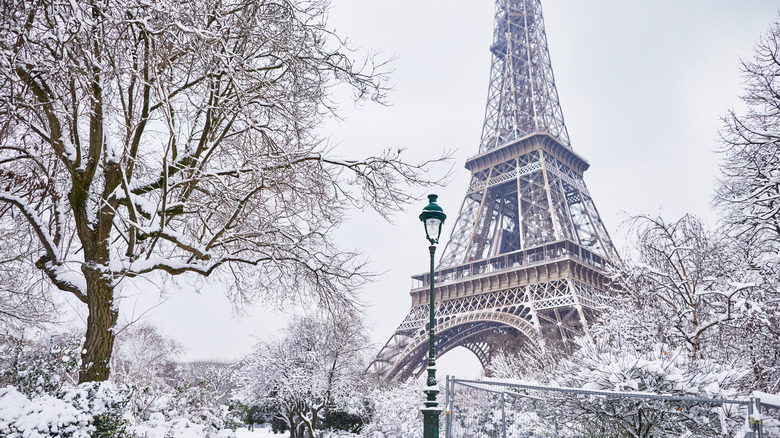
Ekaterina Pokrovsky/Shutterstock
The entries are chosen based on the travelers’ opinions on Tripadvisor and Google, with an emphasis on visiting France during winter. Also, we combined these reviews with an extensive personal knowledge of the country that stems from traveling to the places mentioned in the article and trying them first-hand.
Finally, the official tourist boards’ seasonal recommendations are also considered for practical suggestions on the best attractions, restaurants, and activities. The collection is not only limited to the classic French mountain winter destinations but includes a diverse set of places for a variety of budgets.

